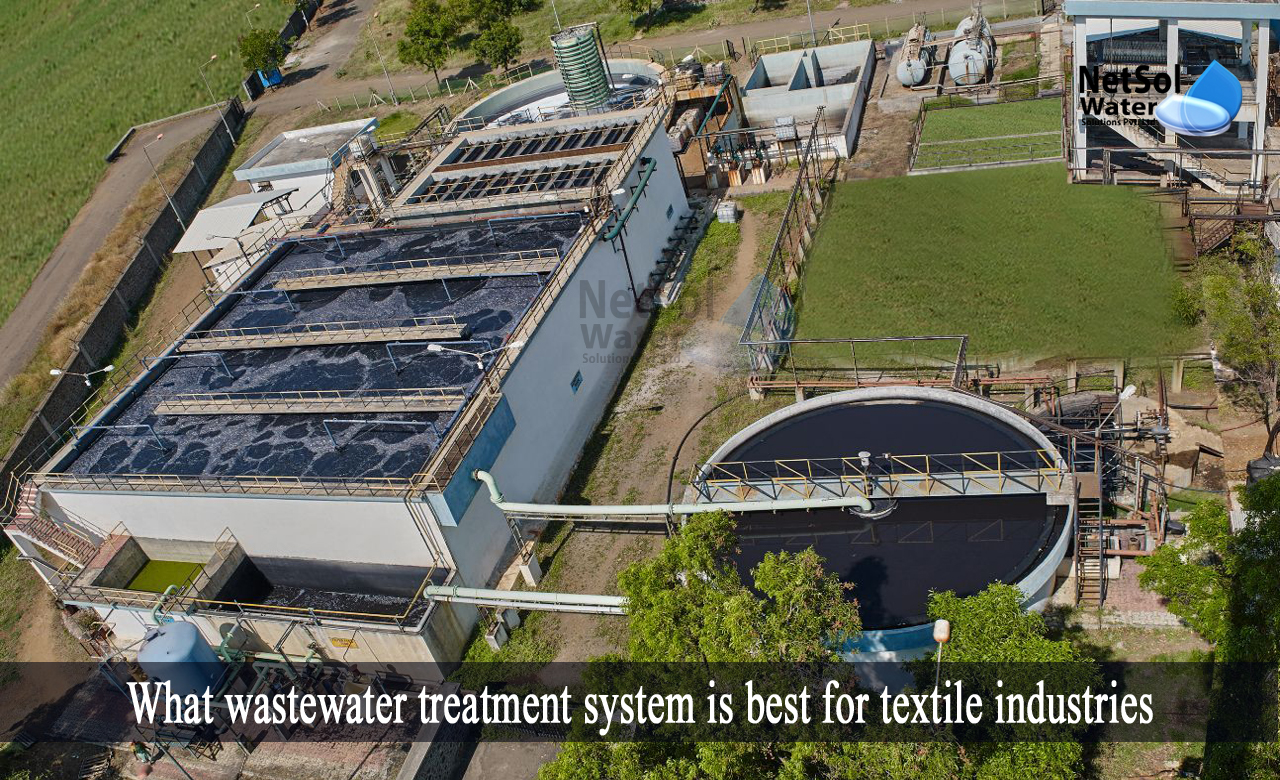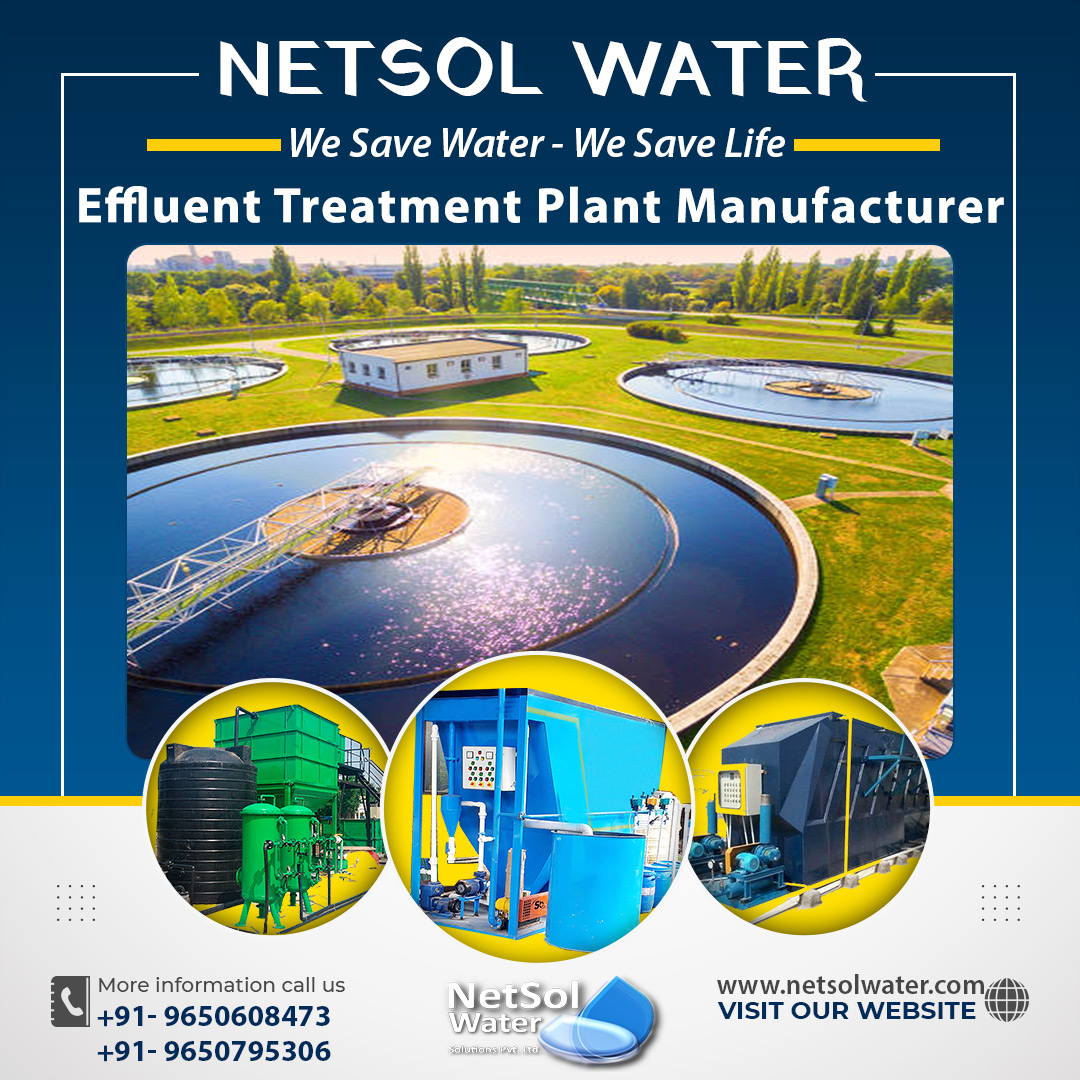What wastewater treatment system is best for textile industries?
It's critical for textile mills to have a plan in place for the efficient treatment of wastewater effluent. Water is used extensively during the production of textiles, and toxic chemicals, dyes, acids, and starches, are discharged into the water. Textile waste can seriously pollute water, endanger human health, and harm the ecosystem.
Numerous industrial processes used in the textile industry, necessitate physico-chemical treatment of the water, utilized in those processes. Textile industries need an adequate effluent treatment system, in order to treat water properly while conserving time, space, and money, because textile wastewater is toxic.
Now, you must be thinking! What is the best wastewater treatment technology for textile industries?
Moving bed biofilm reactor (MBBR) technology is the best way, to treat industrial effluent from textile industries. The MBBR system, which is effective, economical, long-lasting, and environmentally friendly, is the best wastewater treatment technology for the textile industry.
Characteristics of textile wastewater
Environmental and human health is seriously threatened by the pollution of textile wastewater. The following toxins are removed from water, during textile wastewater treatment, to protect the environment and our water systems:
· Dyes
Dyeing textiles necessitates the treatment of wastewater. Because they are poisonous and non-biodegradable, synthetic dyes pose a serious risk to the environment. They are found in textile effluent, and have a negative impact on crop output, soil fertility, and human health.
The following dyes are utilized in the textile industry:
- Coloured anthraquinones,
- Azo colours,
- Xanthene colours,
- Indigo dyes,
- Phthalocyanine-based dyes,
- Colours made from diphenylmethane and triphenylmethane,
- Colours that are nitrated and nitrosated,
- Polymethinic pigments,
- Basic or cationic dyes,
- Reactive colours,
- Metal-based dyes,
- Direct dyes or substantive dyes,
- Dissolvable colours,
- Vat colours,
- Pigments.
Dyes can harm the fundamental elements of aquatic habitats, since they are not biodegradable. Additionally, dyes restrict light from reaching the depths of aquatic ecosystems, reducing the photosynthesis of aquatic vegetation, and altering the characteristics of these environments.
· Chemicals
Chemicals used in textile manufacturing pose serious health and environmental risks.Numerous chemicals used in the production of textiles are caustic. Materials that are vulnerable can be harmed by chemicals, like lye and bleach.
The following textile finishes are created with the aid of chemicals:
- Anti-bacterial coating
- A finish that resists fire
- Finish that resists stains
- Anti-static surface
- Easy-care surface
- Hydrophilic surface
- A non-slip surface
· Compounds used in the finishing processes
Since chemicals are required to produce these fabric finishes, they also end up in the wastewater produced by the textile industry, and must be removed to save the environment.
The following compounds are used in a variety of finishing processes:
- Formaldehyde
- Silicone
- Phenols
- Organo-silver
- Compounds with quaternary ammonium
- Polyamides with oxy-ethylation
- Inulin gel
- Flame retardants made of chlorine
- Flame retardants made of bromine
- Flame retardants containing phosphorus
- Salts of polyammonium quaternary
- Fibres
Fabrics and textiles both include fibres that might cause contaminated effluent, to be produced. Numerous different fabrics, including the following, can be produced by textile factories:
Denims, Velvet, Felt, Mohair, Fleece, Muslin, Brocade, Gabardine, Gauze, Poplin, Crepe, Flannel, Tweed, Corduroy, Chintz, Fustian Fur, Gingham, Terrycloth, etc.
- Starch
High-strength organics are released by the starches, used in the textile industry and must be recycled or removed from wastewater.
The following are the principal starches used in the manufacture of textiles, which include, Potato, Corn, Sago, Cassava, Rice, Wheat, etc.
- Acid
Acidic wastewater is also produced during the textile production process.
The following are a few examples of acids used in the textile industry, which include HCl, sulphuric acid, phthalic acid, acetic acid, liquid nitrate, etc.
Textile wastewater treatment types
In textile factories, wastewater can be treated in a variety of ways, but some are better than others. Processes for treating wastewater from the textile industry include the following:
A: Adsorption: During the adsorption process, wastewater molecules in liquid form are attached to a solid, such as activated carbon.
B: Aeration: When oxygen is given to a wastewater column, the process of aeration stimulates good bacteria, and enables them to break down organic waste.
Water treatment using activated sludge combines aeration with extra bacteria, which breaks down the organic materials in the effluent. The precise calibration of the meal to microbe ratio, makes this process exceedingly time-consuming.
C: Coagulation-flocculation: Adding polymers to wastewater during the coagulation-flocculation process, causes small pollutant particles to group together into bigger clumps. Although this procedure is quite simple, it still needs to be combined with other wastewater treatment techniques, because it cannot completely remove all waste from the water.
D: MBBR:The best method for treating textile wastewater is MBBR. To clean up wastewater of toxins, biological processes are generally used.
For textile facilities that process continuous high-volume loads and plants that want to conserve space, this treatment procedure is advantageous. Textile plants can increase the efficacy of their wastewater treatment, and operating capacity without having to enlarge their buildings, thanks to the space-saving benefits of MBBR tanks, which enable a higher biomass concentration.
MBBR's benefits for textile industries
Due to its many advantages, MBBR wastewater treatment is a crucial type of wastewater treatment. It includes the following benefits;
Faster water treatment: The MBBR treatment method treats water more quickly, since you may use an existing tank and add MBBR media to it, to treat water effectively.
Longer lifespan: Because the membranes used in the MBBR system to contain bacteria, are strong and long-lasting, the system as a whole has a long lifespan.
Reduced hydraulic retention time (HRT): The average amount of time, the substrate is kept in the digester, is known as HRT. The wastewater spends less time in the tank, before moving on to the subsequent step of treatment, when using the MBBR technique.
Self-sufficiency: Because the MBBR approach is so self-sufficient, textile plant managers can save time and money, by not having to engage someone to carefully supervise the equipment or procedures. The MBBR system is simple to use, because it has fewer controls than other systems.
Greater hydraulic capacity: MBBR systems are more effective, because they can manage more water than competing systems.
Improving textile wastewater treatment's efficiency with MBBR systems
It's critical to effectively treat wastewater for a number of reasons. It safeguards the environment, lowers expenses, and makes running textile factories simpler. The advantages of using a more effective wastewater treatment technique include:
A: Environmental Responsibility
The following ways that MBBR, an effective wastewater treatment technique, might stop environmental harm:
Motor efficiency: Effective wastewater treatment reduces backflow and high head-loss, which conserves energy.
Effective heat recovery: It is used in efficient wastewater treatment to stop textile factories, from using more energy and heat, than they should. Therefore, less greenhouse gas emissions take place.
Effective wastewater treatment: It keeps dangerous pollutants from invading the environment, and causing pollution.
B: Efficiency of Cost
The followin?g ways that MBBR, an effective wastewater treatment lowers costs:
· Operations are streamlined for quicker water treatment.
· There are less repairs and replacements needed for equipment.
· It lowers energy prices.
C: Operating effectiveness
With an effective wastewater treatment process, plant operation and maintenance are simplified. The following steps are included in the treatment of textile wastewater:
· Removing small particles from process water.
· Removing oil.
· Uniform particle dispersion, by homogenization,
· Through neutralization, the pH of the effluent is altered.
· Physical and chemical treatment.
· Purification.
· Deinking to get rid of the dyes.
The time and money needed to finish the mentioned procedures and treat wastewater, in a textile mill can be decreased with effective techniques, and long-lasting equipment.
Manufacturers of wastewater treatment plants for textile mills
Wastewater from the textile industry is harmful to the environment and to people's health. To prevent wastewater pollution, poisonous and dangerous substances that are released into the water, during textile production must be eliminated.
Netsol Water provides effective programmes and systems for treating textile effluent. We provide outstanding wastewater solutions for any sector, with high-quality, dependable products and a knowledgeable engineering group. The MBBR system offers unmatched results, to assist textile industries in efficiently treating their water.




